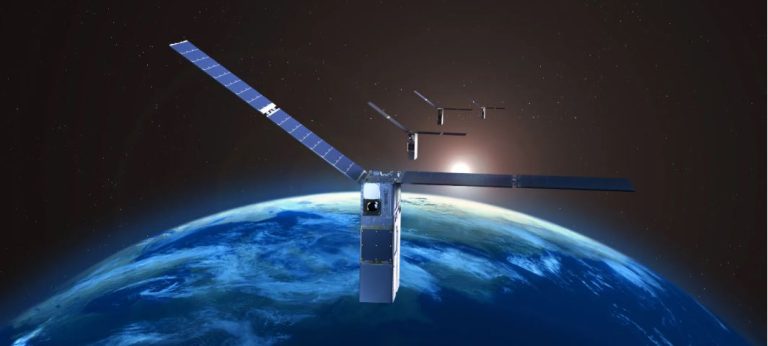NASA Starling and SpaceX Starlink Pioneering Space Traffic Coordination
Given the vast expanse of low Earth orbit (LEO), the increasing number of satellites presents both opportunities and challenges. As space becomes more congested, effective traffic coordination is paramount to ensure the safety and efficiency of satellite operations. Enter NASA’s Starling mission and SpaceX’s Starlink constellation—two groundbreaking initiatives that are not only advancing space technology but also collaborating to enhance space traffic management.
The Genesis of NASA’s Starling Mission
NASA’s Starling mission is an ambitious endeavor aimed at demonstrating the capabilities of autonomous spacecraft swarms. By deploying four CubeSats into LEO, Starling seeks to test technologies that enable multiple spacecraft to operate in a coordinated and synchronized manner without direct intervention from ground control. This mission is a significant step toward realizing distributed missions, where clusters or swarms of small spacecraft work collaboratively to achieve scientific objectives.
Objectives and Technological Innovations
The primary goal of the Starling mission is to advance the readiness of technologies that facilitate autonomous coordination among spacecraft. Key objectives include:
-
Autonomous Navigation: Enabling spacecraft to determine their positions and navigate without relying on ground-based systems.
-
Inter-Satellite Communication: Developing robust communication protocols that allow seamless data exchange between swarm members.
-
Coordinated Maneuvering: Demonstrating the ability of multiple spacecraft to perform synchronized movements and adjustments in orbit.
By achieving these objectives, Starling aims to lay the foundation for future missions that require cooperative behavior among multiple spacecraft, thereby enhancing the efficiency and scope of space exploration.
SpaceX’s Starlink: Revolutionizing Global Connectivity
SpaceX’s Starlink project is a satellite internet constellation designed to provide high-speed, low-latency broadband internet across the globe, particularly in underserved and remote areas. With thousands of satellites already deployed and plans for many more, Starlink represents a monumental shift in global connectivity.
Technical Overview and Achievements
Starlink satellites operate in LEO, forming a mesh network that delivers internet services with reduced latency compared to traditional geostationary satellite systems. Notable achievements of the Starlink project include:
-
Rapid Deployment: SpaceX has successfully launched thousands of satellites, with frequent launches adding to the constellation’s robustness.
-
Global Coverage: Starlink currently operates in over 120 markets worldwide, providing internet services to a diverse range of users.
-
Technological Advancements: Ongoing developments, such as the introduction of gigabit-speed capabilities, are continually enhancing the system’s performance.
“Starlink is not just about connecting people; it’s about connecting humanity to the future,” remarked Elon Musk, highlighting the transformative potential of the project.
The Imperative for Enhanced Space Traffic Coordination
As the number of satellites in LEO increases, the risk of conjunctions—close approaches between orbiting objects—also rises. Traditional space traffic management relies heavily on ground-based monitoring and manual coordination, processes that can be time-consuming and prone to delays. In an environment where timely maneuvers are critical, the need for more efficient and autonomous coordination mechanisms is evident.
Challenges in Current Systems
Current space traffic coordination involves:
-
Manual Communication: Operators often rely on emails and phone calls to coordinate maneuvers, leading to potential delays.
-
Predictive Limitations: Forecasting potential collisions involves uncertainties, sometimes resulting in unnecessary maneuvers or missed opportunities for data collection.
-
Resource Constraints: Human operators can manage only a limited number of satellites, restricting the scalability of operations.
Addressing these challenges requires innovative solutions that leverage automation and inter-operator collaboration.
Collaborative Efforts: Starling Meets Starlink
Recognizing the mutual benefits of collaboration, NASA’s Starling mission and SpaceX’s Starlink constellation have engaged in joint efforts to enhance space traffic coordination. This partnership focuses on developing and testing autonomous systems that allow satellites from different operators to coordinate maneuvers seamlessly.
Conjunction Screening Service
A significant outcome of this collaboration is the development of a conjunction screening service. This system enables satellite operators to submit trajectory data and receive timely information about potential conjunctions. Operators can then autonomously plan and execute maneuvers to mitigate collision risks. For instance, during the Starling 1.5 experiment, NASA’s Starling satellites successfully utilized this service to coordinate with Starlink satellites, demonstrating the feasibility of autonomous, inter-operator maneuvering.
“This experiment marks a pivotal step toward autonomous space traffic management, reducing reliance on ground-based coordination,” noted a NASA spokesperson.
Implications for Future Missions
The success of the Starling-Starlink collaboration has far-reaching implications:
-
Reduced Response Times: Autonomous coordination allows for quicker responses to potential conjunctions, enhancing safety.
-
Scalability: Automated systems can manage larger constellations, facilitating the expansion of satellite networks.
-
Operational Efficiency: Minimizing manual interventions frees human resources for other critical tasks, optimizing overall mission operations.
Broader Impact on the Space Industry
The advancements demonstrated by NASA and SpaceX set a precedent for the entire space industry. As more entities launch satellites into LEO, adopting autonomous coordination systems becomes increasingly vital. Standardizing such systems can lead to a more organized and safer orbital environment.
Regulatory and Policy Considerations
The collaboration also highlights the need for updated regulations and policies that accommodate autonomous operations. Ensuring that all operators adhere to standardized protocols will be essential in maintaining order and preventing conflicts in space traffic

